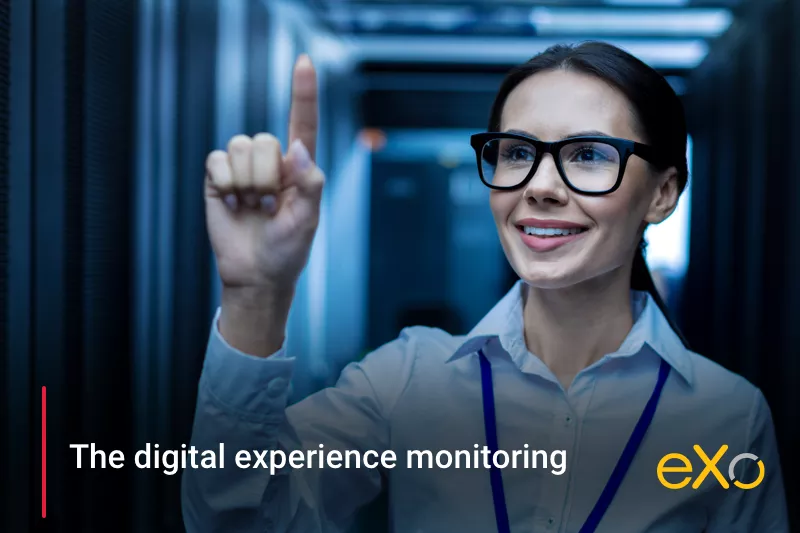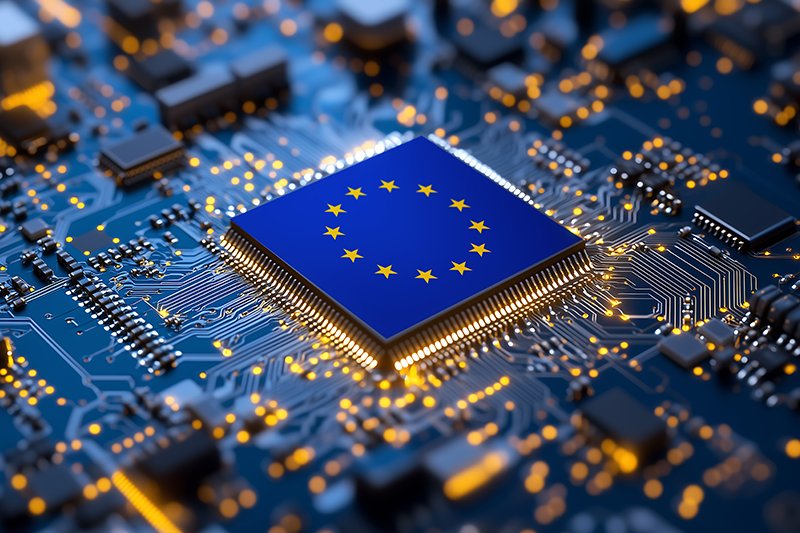- Fares Laroui
- July 6, 2021
Digital experience monitoring and why it is important

Content
In today’s rapidly changing IT landscape, businesses in general and IT teams in particular have the challenging mission of ensuring a smooth transition to partial or full remote working, anticipating potential system issues, managing emerging policies such as BYOD (Bring Your Own Device) and limiting phenomena such as shadow IT, all the while maintaining high levels of productivity and employee engagement.
This bears the question how.
As is the case with any major initiative in business, the first step revolves solely around monitoring and measurement.
Designated teams need to assess their existing IT systems -both software and hardware- in order to pinpoint the areas to be addressed and work on potential improvements.
Digital experience monitoring or management will be the topic of today’s blog post. First, we are going to explore some of the traditional ways of measuring the effectiveness of IT systems, define the concepts of digital experience monitoring and digital experience score and why they are important as the first steps to reach a successful digital employee experience.
1. What is digital experience monitoring?
To properly grasp what digital experience monitoring (DEM) is all about, we would have to first go back to the definition of DEX. As we previously stated, DEX examines how an employee interacts with his/her digital environment as a whole (whether within the office environment or while working from home) and -more precisely- how they feel about it. The latter part of this definition is what makes DEM stand out from the usual monitoring techniques and solutions used in the workplace today.
Typically, IT teams use a variety of solutions to assess their digital environment (devices, applications and networks) such as Application Performance Monitoring (APM), Network Monitoring, Endpoint Management, among others. For instance, the SolarWinds APM solution is widely used to automate the processes involved in pinpointing performance problems and finding fixes efficiently, so user experience doesn’t suffer from app issues. These tools provide a detailed view on the performance of specific IT components generally within the office premises.
The issue, however, is that these tools are heavily focused on technology and often overlook the individual experience of the end user. For example, metrics such as user adoption, engagement and satisfaction are hard to identify with these tools. This is why we have seen many teams rely on traditional research methods (both quantitative and qualitative) to learn more about their users’ experiences, what causes issues, what are the factors that affect productivity, and more.
Although these research techniques offer a wide variety of useful data, their timing is a bit problematic as they usually push IT teams to be reactive rather than proactive. For example, launching such surveys after an incident has occured is a problem in itself. More often than not, employees would have to wait for a fix (if there is any) which obviously amounts to their frustration that would later turn to increased disengagement and dissatisfaction.
This is when DEM comes into play.
Gartner defines the Digital Experience Monitoring (DEM) as a performance analysis discipline that supports the optimization of the operational experience and behavior of a digital agent, human or machine, with the application and service portfolio of enterprises… This discipline also seeks to observe and model the behavior of users as a flow of interactions in the form of a customer journey.
A lot to take in from this lengthy definition. But, in short, think of DEM as the glue that groups systems performance data, real-time usage behaviour and user experience trends. Contrary to the above techniques that are rather reactive, DEM acts as a proactive and agile approach that helps in eliminating silos, assessing IT systems, anticipating future issues and optimizing the overall digital experience.
tools and information
2. Why is digital experience monitoring important?
Increased visibility by unifying decentralized systems
With the rapid rise of remote working even prior to Covid-19, the definition of the office has significantly changed, emphasizing the importance of digital transformation. The office can be anywhere from an employee’s home, a coffee shop, library, you name it.
This situation eventually caused a decentralization of IT systems which made it hard for IT teams to properly manage their digital environments and accurately assess their employees’ experiences.
With DEM, teams can have a unified view of the different systems they use whether within the office premises or outside. Examples of metrics to be tracked can be relative to both software and hardware such as digital workplace adoption and engagement metrics, applications performance, infrastructure downtime, latency time, capacity storage etc.
Take a more proactive and agile approach
As mentioned earlier, IT teams have a variety of ways with which they can collect data about their digital environments. One thing about DEM is that it is primarily built to help decision makers track and record end user’s behaviour and interactions with different IT systems in real-time through Real User Monitoring (RUM).
This method allows for a quick and timely identification, isolation and resolution of system drawbacks thus providing employees with an optimal digital experience.
Cut costs and improve IT return on investment
Businesses that work on continuously measuring their employees’ experience have a greater chance to cut IT costs, innovate and obviously get a better return on their investments.
For example, the decision to implement or build a digital workplace is one that requires a deep understanding of employees’ preferences, pain points and overall needs all the while, of course, keeping an eye on market trends. And DEM plays an important role in this.
If the project is thoroughly conducted with a user centric approach, then businesses can properly monitor their employees digital experiences prior and after the launch thus guaranteeing high levels of adoption, efficiency, engagement and satisfaction. If not, then adoption will be low causing a decrease in productivity and employee engagement thus carrying severe financial losses.
3. The digital experience score
A lot of the raw data collected through digital experience monitoring can be a lot to handle on its own. For this reason, IT teams try to simplify, quantify and contextualize this data taking into consideration the multitude of factors that can make or break the end user’s digital experience.
In its simplest form, the digital experience score represents an encompassing metric which combines data collected through multiple touchpoints (the digital workplace, business applications like software for monitoring employees, systems networks, etc). The data ranges from employee sentiment and behaviour, productivity metrics to device and systems usage.
It gives a single and holistic score indicating the health and quality of the digital environments (applications, devices and networks). The score also allows IT teams to have a benchmark upon which they can compare digital experiences across different teams and departments and assess the success of their future initiatives.
Let’s summarize
The process of measuring the digital employee experience is a complex and tricky one. IT teams need the adequate methodologies, analysis practices and technologies to effectively assess end users’ individual digital experiences and accurately predict any potential system failures.
The eventual next step is to build on the collected findings and the digital experience score to develop strategies that will help businesses provide a better and broader digital experience for their users. This will be the topic of the third and last blog post of this series in which we are going to examine a set of best practices and strategies to build a successful digital employee experience. Stay tuned!

FREE WHITE PAPER
Types of Digital workplace solutions
The modern workplace has evolved significantly in recent years, with advancements in technology, the growing number of tools …
FAQ
You will find here Frequently Asked Questions about digital workplace with all the answers in one place.
What is a digital workplace?
A digital workplace is a next generation of intranet solutions or intranet 2.0 that is based on three pillars: communication, collaboration and information. In a way this definition is true but it doesn’t cover the whole spectrum of the term.
Here are some definitions of digital workplace:
- An evolution of the intranet
- A user centric digital experience
What is digital experience monitoring (DEM)?
To properly grasp what digital experience monitoring (DEM) is all about, we would have to first go back to the definition of DEX. As we previously stated, DEX examines how an employee interacts with his/her digital environment as a whole (whether within the office environment or while working from home) and -more precisely- how they feel about it. The latter part of this definition is what makes DEM stand out from the usual monitoring techniques and solutions used in the workplace today.
➝ See the full definition of digital experience monitoring (DEM)
What is the digital employee experience (DEX)?
In its simplest form, DEX examines how an employee interacts with his/her digital environment as a whole (whether within the office environment or while working from home) and -more precisely- how they feel about it.
The rise of DEX and the increased interest it has gathered lately is mainly due to the multitude of technologies employees have at their disposal and the tech savvy nature of new generations who expect the latest tech in the workplace.
➝ See the full definition of digital employee experience (DEX)
Why is digital experience monitoring important?
Here are some reasons why your organizations Need To Focus On digital employee monitoring (DEM):
- Increased visibility by unifying decentralized system
- Take a more proactive and agile approach
- Cut costs and improve IT return on investment
Related posts
- All
- eXo
- Digital workplace
- Employee engagement
- Open source
- Future of work
- Internal communication
- Collaboration
- News
- intranet
- workplace
- Knowledge management
- Employee experience
- Employee productivity
- onboarding
- Employee recognition
- Change management
- Cartoon
- Digital transformation
- Infographic
- Remote work
- Industry trends
- Product News
- Thought leadership
- Tips & Tricks
- Tutorial
- Uncategorized
Leave a Reply
( Your e-mail address will not be published)


